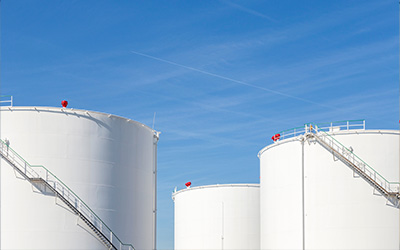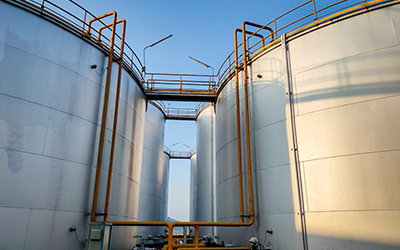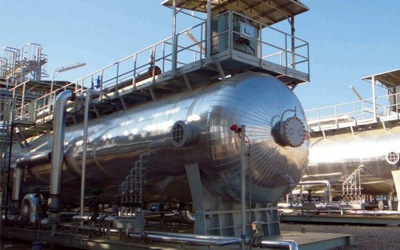Part 1
Part 1 in the series on how the chemical industry is solving challenges in the industrial sector. Follow along as we explore how customized chemicals increase the efficiency, safety and financial performance of refinery operations. Starting with What are the advantages and limitations of Chemical Cleaning?
Chemical Cleaning is the process of removing fouling deposits from process equipment with chemical solutions.
The cleaning action may be entirely chemical in function (such as mineral acids used to degrade inorganic salt scales) or may be assisted by physical means such as steam or turbulent water flow.
There have been many advancements made over the last decade in the chemistries used for conducting chemical cleaning operations. Today, specialized chemical mixtures have been developed to manipulate foaming tendencies, dictate emulsions, remove scales without the use of acidic liquids, and alter the viscosity of a system. To new age companies where the chemical products are on the leading edge of technology, almost anything can be done given a definition of the requirements. This is no longer your grandmother’s “soap”.
Chemical cleaning operations can be conducted in such a way that will not lead to unacceptable pollution of the environment; air, water or soil.
To determine the most suitable cleaning agent for a particular application, a representative sample of the fouling deposit should be analyzed. Knowledge of the process can be most important in quickly understanding the nature of the debris and in selecting the appropriate products for application in successful removal. If samples of the deposits cannot be obtained, then the experience of the chemical producer and/or the equipment owner should be requested.
Many inorganic deposits can be removed using acidic or acid-based commercial cleaning agents, while alkaline solutions can be used for the removal of some organic deposits. Aromatic solvents with an emulsifying agent may remove some tars and polymer deposits. These basics are acceptable where equipment materials of construction will allow for strong acidic or strong alkaline contact and the handling of waste waters through sensitive waste water operations are not impacted.
For equipment that cannot be moved and for systems of vessels and piping, etc., chemical cleaning can be carried out in situ, using mobile facilities to circulate cleaning agents through the equipment. In towers or columns, steam is often the carrier of choice for distributing cleaning chemicals within the vessel in a process known as “steam phase” cleaning. Chemical cleaning can also be carried out by immersion of the equipment in a cleaning agent. This is suitable for small parts or for equipment containing deposits difficult to remove in situ.
In-line, but off-stream chemical cleaning is also now possible for equipment like banks of heat exchangers that once required having the heating bundles cut-out, removed to a cleaning yard and then high-pressure water blasted. On-stream chemical cleaning should be applied only after careful consideration since process temperatures may not be suitable and contamination by the cleaning agent could occur throughout the system.
Specialized chemical cleaning solutions are becoming more widely used to improve the effectiveness and reduce the time needed for equipment decontamination during the process unit shutdowns. The primary objective of the decontamination phase of a shutdown is the removal of hazardous materials from vessels, piping and auxiliary equipment. In many cases, the primary purpose for equipment cleaning is to remove fouling debris that has severely impacted production capacities and is thus effecting revenue creation. However, specialized chemical cleaning solutions can also effectively clean refinery equipment by eliminating residual bulk hydrocarbons, as well as hydrocarbon films and sludge. Included, are chemical preparations that serve to safely decontaminate a vessel and allow for enhanced resource recovery of large percentages of valuable hydrocarbon streams for re-insertion into the refining process. This saves the owner the large expenses associated with hazardous materials waste disposal (very important in tank cleaning operations).
Typically, cleaning products specifically designed for the petrochemical industry are mixed with circulating hot water at a temperature of between 80 and 90°C (176 – 194°F.) A chemical concentration between 1% and 5% is usually employed depending on the nature of the hydrocarbons to be removed and/or the depth of foulant to be removed. Regarding the removal of hydrocarbon debris, a temporary, loose emulsion can be formed between the oil and water phases. The emulsion is then moved to a holding tank to allow the oil phase to quickly phase separate without the addition of supplemental chemicals.
Experience has shown that chemical cleaning can reduce the time required during shutdowns by 50% or more. The time saved and the resultant increase in plant availability can often more than offset the costs of chemical cleaning.
What are the advantages and limitations of chemical cleaning?
The advantages of chemical cleaning are:
- Cleaning can often be carried out without dismantling the equipment.
- Cleaning is more effective since all parts will be reached, resulting in more uniform cleaning.
- When carried out by competent personnel, the damage caused by chemical cleaning is minimal and generally less than that due to conventional mechanical cleaning. Damage induced by mechanical cleaning could enhance corrosion and/or fouling during subsequent operations.
- Cleaning is likely to reduce the time required for decontamination by 50% or more returning the equipment to productive operations more quickly than mechanical cleaning methods.
- Cleaning often generates much less waste materials than mechanical cleaning.
- The opportunity to recover large amounts of valuable hydrocarbon streams is accentuated with chemical cleaning and not as likely with conventional cleaning.
The limitations of chemical cleaning are:
- Chemically inert materials, e.g., coke deposits cannot be removed.
- Severely fouled or fully plugged equipment will require mechanical cleaning since the circulation of chemical cleaning liquids would be impossible or so limited as to render the chemical cleaning less effective.
- Corrosion or equipment damage during chemical cleaning is generally low, but severe damage can occur if improper procedures are applied or unskilled personnel are employed in the application process.
In conclusion, chemical cleaning operations should be carried out only by contractors knowledgeable and skilled in chemical cleaning processes unless the owner has sufficiently experienced labor. The focus should be that the work is carried out in accordance with the approved procedures, that all safety precautions are taken and that used cleaning agents are disposed of in an environmentally acceptable way.



